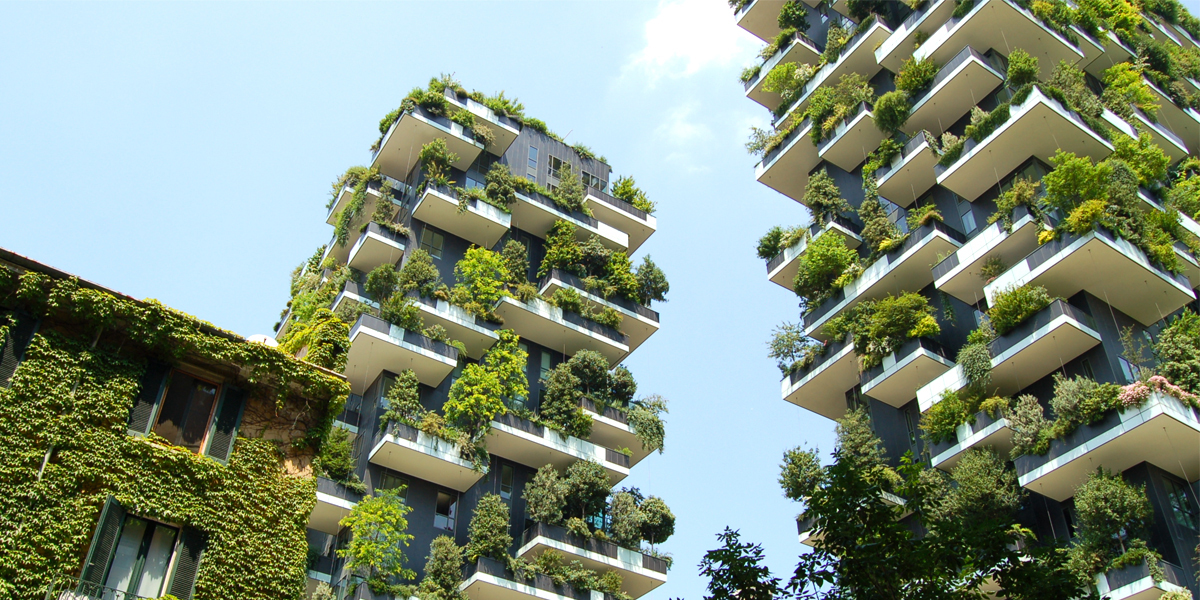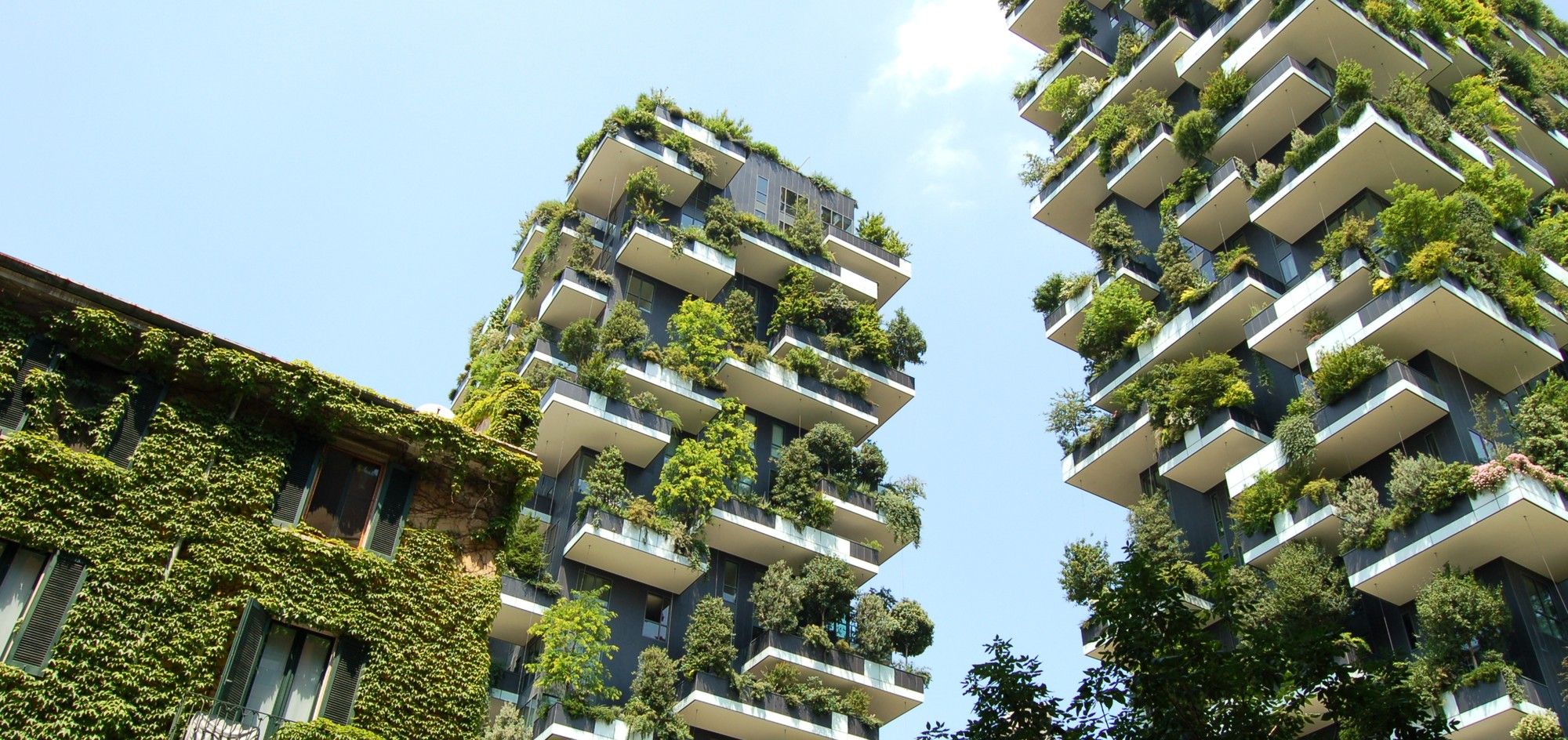

Ever hear the old aphorism, “An ounce of prevention is worth a pound of cure?” When it comes to natural disasters, this saying rings true: Every $1 spent
mitigating potential hazards leads to an average of $4 in future benefits.

Even as we take action to stop
climate change, no one person can prevent a superstorm or a flood from impacting his or her home. That’s why many architects and designers are planning ahead and anticipating the “new normal” of extreme weather due to climate change. And the best part—even if their buildings don’t experience a natural disaster, the structure and its inhabitants still reap the benefits in safety and efficiency.
Here are seven completed buildings that are leading the way on climate-forward architecture: adapting to weather extremes, reducing energy costs and in some cases, fighting climate change while they’re at it.
1. Taipei 101
Go big or go home! Taipei 101, in Taiwan, is notable in itself for its unique style and its one-time claim as the tallest building in the world. But did you know this megastructure contains a ginormous ball that helps it withstand typhoons?
When Typhoon Soudelor brought winds of around 100 mph, the enormous ”
tuned mass damper” inside helped the building stand tall. This mechanism also helps stabilize the structure in case of earthquakes. Amazing!
2. Pérez Art Museum
The typhoon’s counterpart, the hurricane, is a formidable threat in the Western hemisphere and Florida is all too familiar with the powerful winds and surging waves brought on by strong storms. While
recent major hurricanes have not struck Florida to devastating results, the state is still subject to increasing flooding caused by sea-level rise.
At the Pérez Art Museum, millions of dollars’ worth of art is on display in a beautiful oceanfront building flanked by hanging gardens and enormous windows. But look closer—those windows are actually hurricane-resistant. Should Miami get hit by a hurricane or superstorm, the priceless art will be protected.
Even as tides rise, the building is built up above sea level to prevent nuisance flooding. And here’s the best part: The entire museum
received a LEED Gold rating, meaning it’s green from the feet up. Architects found practically every way to make the building more sustainable: reducing concrete, using recycled steel, collecting and recycling rainwater, and other energy efficiency strategies ensure the building maintains a small carbon footprint. That’s what we call a masterpiece!
3. Governors Island
Moving up the East Coast to New York, we find a climate-friendly way to approach the design and layout of public parks.
Governors Island just got a makeover, transforming this green space into a climate bulwark.
In 2007, when designs were finalized for the new park, few would have imagined that the threats seen in
An Inconvenient Truth would become reality so soon. But after Hurricane Sandy in 2012, the decision to make Governors Island a sustainable destination was wiser than ever.
As part of the revamp,
manmade hills were created out of debris from demolished buildings (the site was once a military base), 3,000 new trees were planted, resilient plants took root and large rocks were placed around the island to help dissipate strong waves. So, even if another superstorm strikes, the park will be resilient enough to withstand the waves. Now that’s thinking green!
4. Italy Pavilion
Built for the 2015 Expo Milano, the Italy Pavilion is breathtaking—and it can help you breathe easier! That’s because the forest-like structure around the building is
made from a material that absorbs smog. This special cement is photocatalytic—it can transform unhealthy particulate matter in the air into inert salts using the power of sunlight. Plus, the roof contains photovoltaic glass, generating solar energy for the building. With buildings like this, Milan is cleaning up its act.
5. Richardsville Elementary School
https://www.youtube.com/watch?v=QWj6Emo11sY
It’s not just big buildings going green. Even schools can help cut carbon pollution by switching to
renewable energy. In Bowling Green, Kentucky, Richardsville Elementary School is believed to be America’s first net-zero school—it consumes less energy than it uses by producing its own solar and geothermal energy. The school also reduced energy consumption (and increased healthy lunches) by removing its deep fryers, among other efficiency efforts. At the end of the year, the school gets back around $35,000 from the power company, thanks to its energy contributions to the power grid—and that’s money they can reinvest back in the students and staff.
6. Bosco Verticale
You’ve probably heard of green roofs—when buildings are covered with plants to help absorb rainwater, increase insulation, improve air quality and reduce heating.
Bosco Verticale, also in Milan, takes the green roof idea and brings it to every resident of its two towers. The buildings are covered in
more than 700 trees and 90 species of plants—the equivalent of nearly 2 acres of forests.
Inside, an irrigation system recycles the wastewater to sustain the plants. The plants help to regulate temperatures year-round by providing shade from the hot summer sun and allowing sunlight through to the apartments during the winter.
Bosco Verticale has inspired more designs around the world, with tree-covered buildings already planned in Switzerland and China. With that, we can only say: More trees, please!
7. Bullitt Center
Last and certainly not least, we can’t discuss climate-friendly architecture without mentioning the “greenest office building in the world”—the Bullitt Center in Seattle, Washington.
When planning their new building, the Bullitt Foundation decided to shoot for the moon: a
Living Building certification, signifying that the building meets at least 20 strict requirements, including achieving net-zero energy, supplying its own water, processing its own sewage and so on. In other words, if it saves water or energy, this building does it: solar panels on the roof, rainwater collection system, geothermal energy, energy-efficient lighting, composting toilets and more.
Less than two years after its completion,
the investment was already paying off. In 2014, tenants paid nothing for electricity. Plus, the cost to rent space in the building is comparable to other new office buildings around Seattle. It’s clear that climate action make sense—and cents.
It Can Be Easy Being Green
You don’t have to be an architect or designer to create a sustainable future. In fact, all it takes is someone who cares enough to make it a reality! For more ways to get involved in supporting climate action, sign up for email updates from Climate Reality.

 233k
233k  41k
41k  Subscribe
Subscribe 
